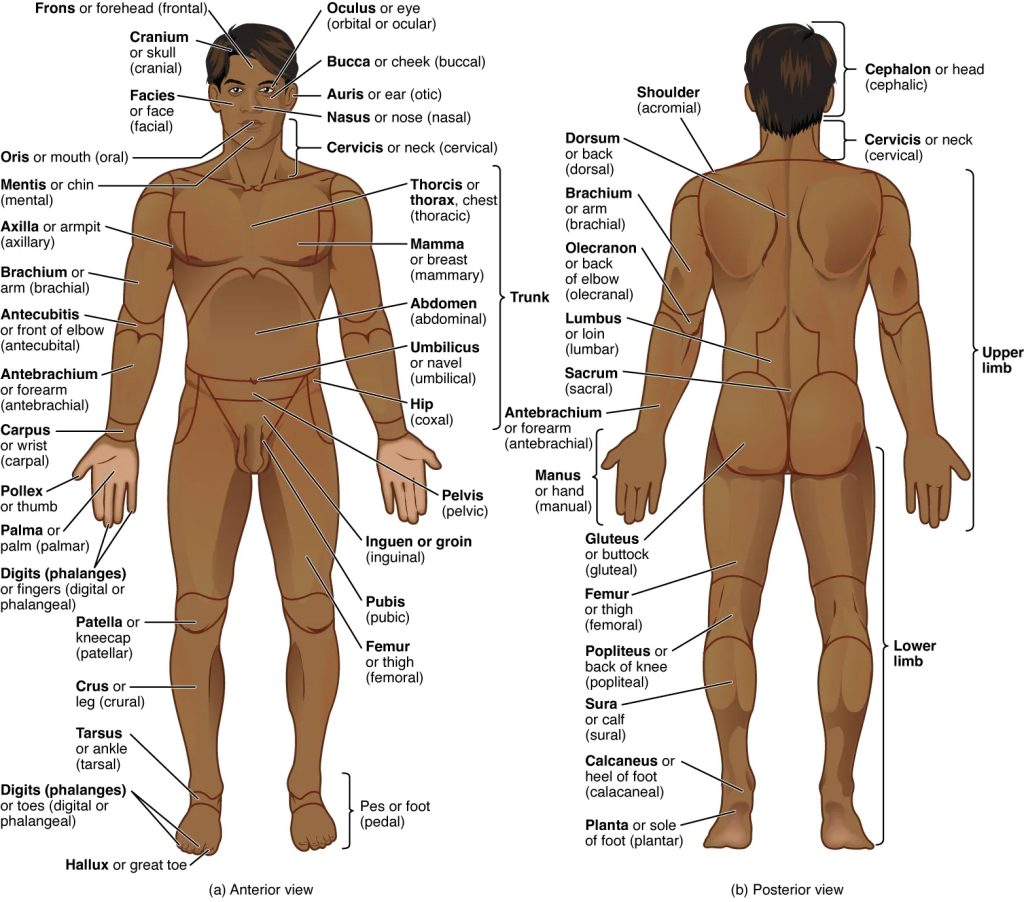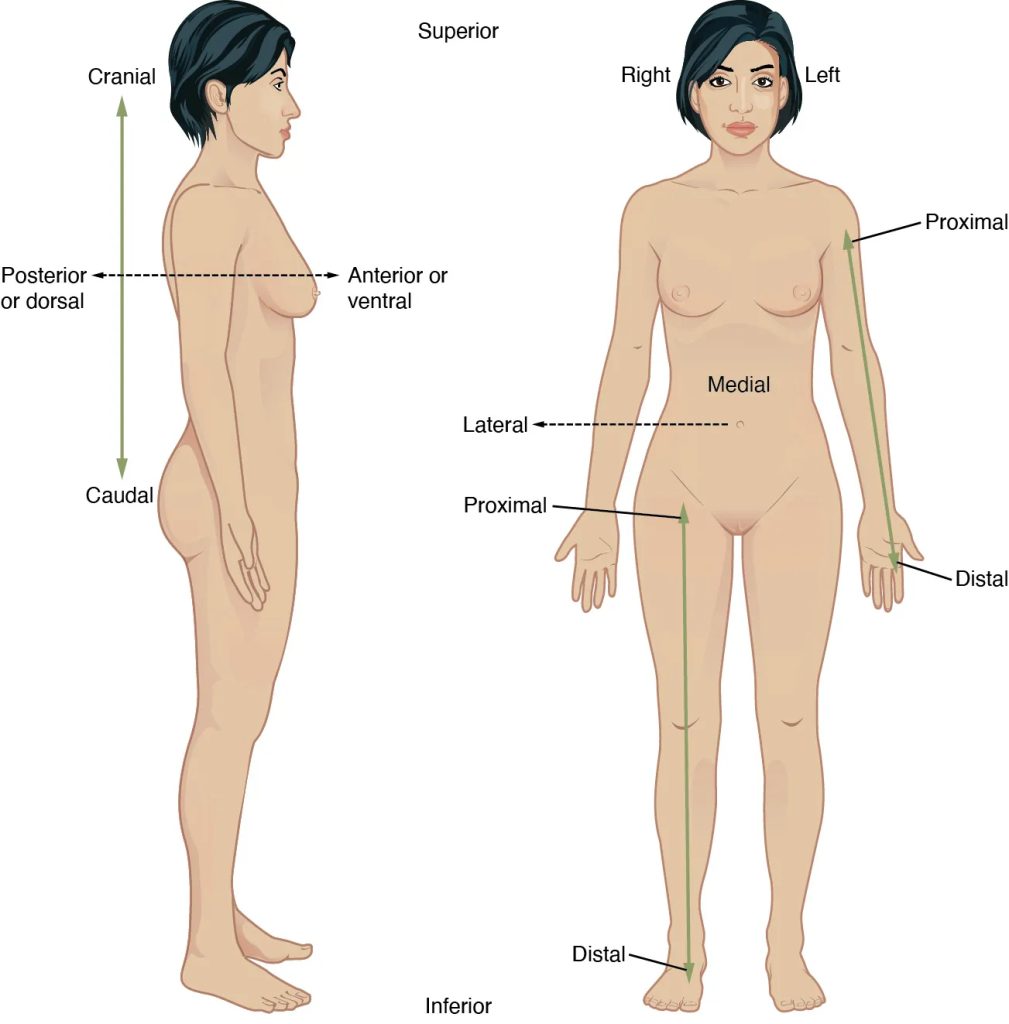
Health care professionals use precise medical terminology when communicating detailed information about the body and its parts to reduce medical errors that can result from ambiguity. To further increase precision, a standardized anatomical view of the body is used. Just like paper maps are oriented with north at the top of the page, the standardized anatomical view of the body is its position standing upright with the feet at shoulder width and parallel and toes facing forward. The upper limbs are held out to each side of the body, and the palms of the hands face forward. The anterior view is the front of the body, and the posterior view is the back of the body. See an illustration of the standard anatomical position of a human body in both anterior and posterior views in Figure 2.7. [1]

Using this standardized anatomical view of the body reduces the potential for inaccuracy or error. It does not matter how a person who is being described is currently positioned when being examined; the terms for anatomical position are used as if the body is in this standard anatomical position. For example, if a patient is being examined while seated with their hand facing palm down on a table and has a scar present on the palmar side of their wrist, the scar is described as being present on the “anterior wrist region.”
In addition to using a standardized anatomical view of the body, several medical terms are used to describe the positioning or location of the body or body parts, especially during specific procedures. For example, an individual lying down on their back is referred to as supine. If they are lying on the abdomen, their position is referred to as prone. If they are lying on their side, their position is referred to as lateral or side-lying.
If a condition occurs on one side of the body, it is referred to as unilateral, whereas if it occurs on both sides of the body, it is referred to as bilateral. For example, if an individual is having weakness in both legs, this condition may be documented as “bilateral leg weakness.”
Specific terms also refer to the location on an individual’s hand or foot. For example, dorsum refers to the top of one’s hand or foot. Palmar refers to the palm side of one’s hand, and plantar refers to the sole side of one’s foot.
View additional information and images about positioning in the “Repositioning Patients” subsection of the “Basic Concepts” section in the “Mobility” chapter in Open RN Nursing Fundamentals.
Directional terms describe the locations of body structures related to each other. For example, a physician might document a tumor as “superficial to” a deeper body structure. See Figure 2.8 [2] for an illustration of directional terms.

Medical Terminology - 2e Copyright © 2024 by Open Resources for Nursing (Open RN) is licensed under a Creative Commons Attribution 4.0 International License, except where otherwise noted.